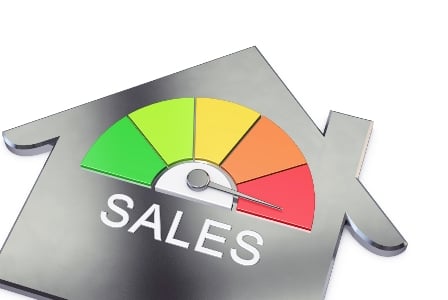Despite supply and affordability headwinds, sales of existing homes are expected to gain 3.5% in 2017 compared to 2016, hitting a decade high

Despite supply and affordability headwinds, sales of existing homes are expected to gain 3.5% in 2017 compared to 2016, hitting a decade high.
The National Association of Realtors’ midyear forecast cites strong job gains and modest economic growth as the drivers of the sales rise but the supply and affordability issues are subduing a rise in the homeownership rate.
"The housing market has exceeded expectations ever since the election, despite depressed inventory and higher mortgage rates," said NAR chief economist Lawrence Yun. "The combination of the stock market being at record highs, 16 million new jobs created since 2010, pent-up household formation and rising consumer confidence are giving more households the assurance and ability to purchase a home."
Sales pace in the first quarter of 2017 was the best since 2007 at 5.62 million units and Yun expects 5.64 million to be achieved by year-end. The national median home price is expected to gain 5%.
The biggest challenge for first-time homebuyers continues to be affordability, exacerbated by low inventory which in turn is impacted by lower housing starts.
Yun says that he forecasts a rise in starts to 1.27 million this year, up 8.4% year-over-year, but the low level of building in recent years means there will still be a shortfall of around 1.5 million homes.
"There was a lot of uncertainty at the start of the year, but a very strong first quarter sets the stage for a modest sales increase compared to last year," said Yun. "However, prices are still rising too fast in many areas and are outpacing incomes. That is why housing starts need to rise to alleviate supply shortages. There will be more sales if there's a meaningful bump in new and existing inventory."
The National Association of Realtors’ midyear forecast cites strong job gains and modest economic growth as the drivers of the sales rise but the supply and affordability issues are subduing a rise in the homeownership rate.
"The housing market has exceeded expectations ever since the election, despite depressed inventory and higher mortgage rates," said NAR chief economist Lawrence Yun. "The combination of the stock market being at record highs, 16 million new jobs created since 2010, pent-up household formation and rising consumer confidence are giving more households the assurance and ability to purchase a home."
Sales pace in the first quarter of 2017 was the best since 2007 at 5.62 million units and Yun expects 5.64 million to be achieved by year-end. The national median home price is expected to gain 5%.
The biggest challenge for first-time homebuyers continues to be affordability, exacerbated by low inventory which in turn is impacted by lower housing starts.
Yun says that he forecasts a rise in starts to 1.27 million this year, up 8.4% year-over-year, but the low level of building in recent years means there will still be a shortfall of around 1.5 million homes.
"There was a lot of uncertainty at the start of the year, but a very strong first quarter sets the stage for a modest sales increase compared to last year," said Yun. "However, prices are still rising too fast in many areas and are outpacing incomes. That is why housing starts need to rise to alleviate supply shortages. There will be more sales if there's a meaningful bump in new and existing inventory."



